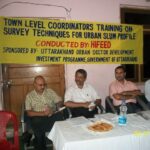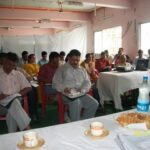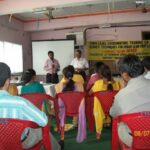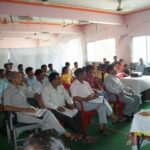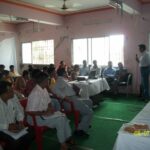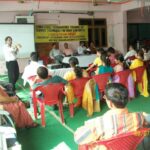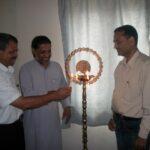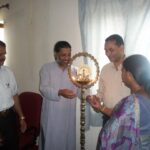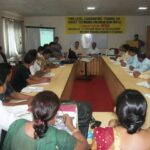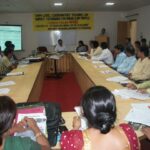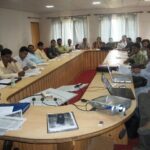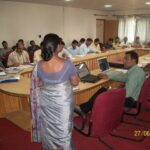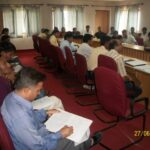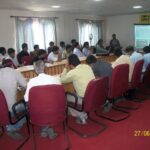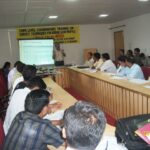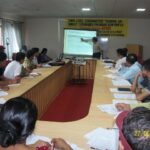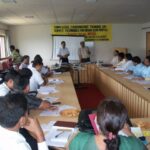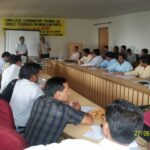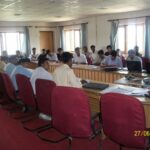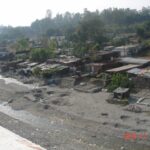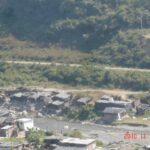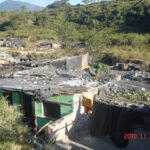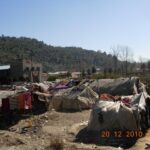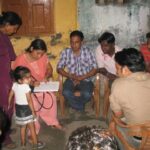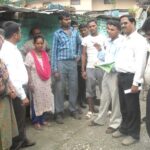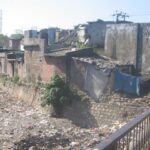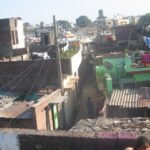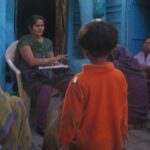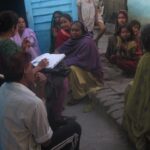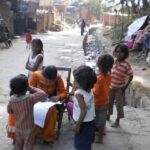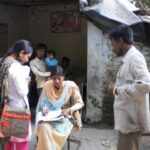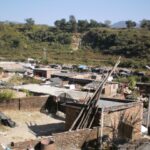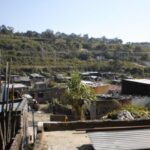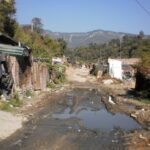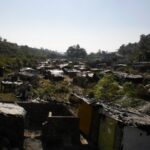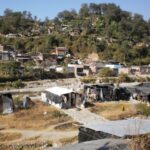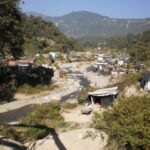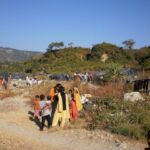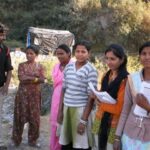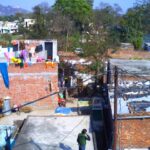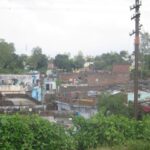CONSULTANCY SERVICES FOR PREPARING SLUM PROFILES
CONSULTANCY SERVICES FOR PREPARING SLUM PROFILES AND CONDUCTING HOUSEHOLD SURVEYS IN SLUM AND INFORMAL SETTLEMENTS OF 63 TOWNS IN UTTARAKHAND STATE
(ASIAN DEVELOPMENT BANK ASSISTED PROJECT)
INTRODUCTION AND BACKGROUND OF THE PROJECT
The Uttarakhand Urban Sector Development Investment Program (UUSDIP) is a project supported by the Asian Development Bank (ADB) through Multi Tranche Financing Facility. Its objective is to assist the Government of India and Government of Uttarakhand in achieving a balanced regional socio-economic development and poverty reduction in the urban sector of Uttarakhand. The program aims to enhance urban governance, management, and infrastructure and service provision, leading to improved quality of life for urban residents and sustainable, efficient, and responsive service delivery. The UUSDIP will undertake physical investments such as rehabilitation and expansion of water supply, sanitation and sewerage, solid waste management, roads and transport, and slum upgrading in 63 Urban Local Bodies (ULBs) of Uttarakhand. To support the implementation of the urban governance, finance, and service-delivery improvement action plan, and to strengthen institutional capabilities of ULBs and other service providers, a capacity development program will be coupled with physical improvements. However, ULBs lack the required organizational capacities and operational and management skills to provide urban infrastructure and services effectively, and financial resources obtained through urban-based taxes and user charges are insufficient to fund urban service delivery.
For slum improvement, interventions will include the provision of bulk water supply and sewerage mains at the entry to slum areas, and improvements to solid-waste management, access roads, street lighting, and drainage in poor communities and slums, which house around 300,000 poor people, accounting for approximately half of the slum population in the state. The selection, approach, and strategic responses to the broader issues of slum population and poor communities will be based on a state slum upgrading strategy to be developed at the outset of the Investment Program. A demand-led approach to developing community-level infrastructure and services will be followed. Slum upgrading subprojects will be generated through a participatory planning process by communities with the assistance of community-based organizations (CBOs) and non-governmental organizations (NGOs). Support will be provided to ULBs and communities for effective joint functioning in developing, implementing, and sustaining community-based urban upgrading schemes. The component will benefit from, and build on, existing community-based organizations (CBOs) and non-governmental organizations (NGOs) efforts and the Uttarakhand government’s poverty reduction schemes. The baseline survey will benchmark the current status, physical infrastructure and situations, socio-economic profile of slum-dwellers, access to various on-going schemes, satisfaction level of dwellers for various services including identifying the key problem and issues.
AIMS AND OBJECTIVES OF THE PROJECT
1. The primary objective of this program is to facilitate and stimulate economic growth, alleviate poverty, enhance urban infrastructure and services, and foster improved governance across major urban centers.
2. All initiatives and sub-projects within this program adhere closely to both national and state financial policies that are specifically relevant to the urban sector.
3. Acting as a supportive initiative alongside the state’s financial reform efforts under the 74th Constitutional Amendment Act (CAA) and the Jawaharlal Nehru National Urban Renewal Mission (JnNURM), this program introduces measures to reform accounting practices and implement strategies for recovering operation and maintenance costs through user charges and property tax revisions.
4. The purpose of the study is to provide essential data necessary for the successful implementation of the Urban Infrastructure and Governance (UUSDIP) program, which caters to the needs of 63 Urban Local Bodies (ULBs) in the designated towns.
5. The collected data serves as the basis for formulating comprehensive plans aimed at developing slum infrastructure and designing socio-economic programs specifically tailored to benefit the urban poor.
6. The comprehensive documentation generated as part of this endeavour encompasses a vast dataset dedicated to slums, covering critical elements such as area, population, legal status, available services, economic activities, ongoing initiatives, and more.
7. The process of data collection extends to gathering socio-economic information at the household level, evaluating satisfaction levels, identifying successful initiatives that have improved slum conditions, and producing detailed sketches that capture the intricate interplay of both the physical and social dimensions within these urban areas.
COMPONENTS AND ACTIVITIES OF THE PROJECT
1. Conduct a thorough assessment of slums’ resource base, systems, institutions, and related factors at both macro and micro levels.
2. Follow the prescribed formats and guidelines by the Government of India for conducting interviews during the survey process. This will result in the creation of detailed slum, household, and livelihood profiles.
3. Gather data that encompasses both qualitative and quantitative aspects of slums, which will contribute to the development of a comprehensive state-level database.
4. Execute a Participatory Rural Appraisal (PRA)-based macro-level assessment for slums, along with a survey-based micro-level assessment targeting individual households. These assessments will form the foundation of the baseline study.
5. Collect data from a diverse range of sources including households, community organizations, officials from various bodies, non-governmental organizations (NGOs), and other stakeholders.
6. Place emphasis on the baseline study’s examination of physical infrastructure and socio-economic parameters that are directly aligned with the project’s overarching goals.
7. Prioritize the quality of the collected data, ensuring that it offers adequate coverage within the desired sample size.
8. Engage qualified survey professionals who have been trained to administer interviews effectively and consistently.
9. Oversee the field surveys with the involvement of key professionals to ensure accuracy and adherence to established protocols.
10. The study’s primary objective is to conduct a comprehensive assessment of existing slums and informal settlements across 63 towns in the state, encompassing surveys of all households within these settlements.
TARGET AREA OF THE PROJECT
The survey and study were meticulously crafted with a specific focus on the slum areas encompassing 63 Urban Local Bodies (ULBs) within the state of Uttarakhand.
TARGET GROUPS AND BENEFICIARIES OF THE PROJECT
The project was oriented towards households residing within the slum areas of the 63 Urban Local Bodies (ULBs) within the state of Uttarakhand.
FUNDING PARTNER OF THE PROJECT
The project’s funding was facilitated by the Uttarakhand Urban Sector Development Investment Program (UUSDIP), Urban Development Department, Government of Uttarakhand, Dehradun. This initiative is bolstered by the support of the Asian Development Bank (ADB).
SANCTIONED BUDGET OF THE PROJECT
The project was sanctioned by UUSDIP in the year 2010, under sanction order No. WSA/IPMC/2010/432 dated 20.05.2010. The total cost of the project was sanctioned for a period of one year and amounted to Rs. 77,66,666.00.
OUTCOMES AND ACHIEVEMENTS OF THE PROJECT
Outcomes and achievements of the study that have been accomplished after the successful implementation of the project, mentioned below:
1. As a pivotal step, an extensive household survey focused on slums has been meticulously carried out, acquiring a comprehensive array of details to establish a robust state database, encompassing both a macro-level assessment achieved through Participatory Rural Appraisal (PRA) and a micro-level household evaluation, all integral components of the finalized baseline study.
2. A concerted effort has been directed towards ensuring the acquisition of high-quality data, a task facilitated by the strategic employment of well-crafted survey instruments, a team of adeptly trained personnel, and a methodical approach to data management that ensures precision and reliability.
3. The selection of the sample size, a critical aspect, has been conducted with precision, considering the delicate balance between representation and manageability, and acknowledging the pivotal role of quality data in guiding well-informed decision-making and the formulation of effective policies.
4. To execute this task with excellence, professionals possessing the requisite survey expertise have been methodically recruited and subsequently equipped through comprehensive training, capacitating them to adeptly administer the interview schedules, all under the vigilant supervision of seasoned professionals who ensure the integrity and meaningfulness of the field survey results.
5. A comprehensive and exhaustive assessment, spanning both macro and micro levels, has been meticulously undertaken across slums in a total of 63 towns, a monumental endeavour that has yielded an invaluable state database offering profound insights into an array of crucial parameters, including household socio-economic status, physical infrastructure, availability of basic services, and the ongoing trajectory of improvement initiatives.
6. The data collection process, far-reaching in its scope, has encompassed a wide spectrum of stakeholders, ranging from households and community organizations to individuals occupying roles as people’s representatives, office bearers, and officials representing key entities such as Uttarakhand Jal Sansthan (UJS), Uttarakhand Jal Nigam (UJN), Urban Local Bodies (ULBs), the Mayor, Chairperson, Ward Corporators, and pivotal non-governmental organizations (NGOs).
7. A meticulous documentation endeavour has been undertaken, encapsulating the existing conditions of the various slum areas, entailing comprehensive and nuanced information that spans from specific slum-level attributes to a comprehensive understanding of household socio-economic status, gauging satisfaction levels with provided services, identifying successful initiatives that have propelled slum improvements and social development within these designated towns, and even capturing the intricacies of slum layouts through illustrative sketches that encapsulate both the present-day physical infrastructure and the socio-cultural dynamics inherent within these settlements.





